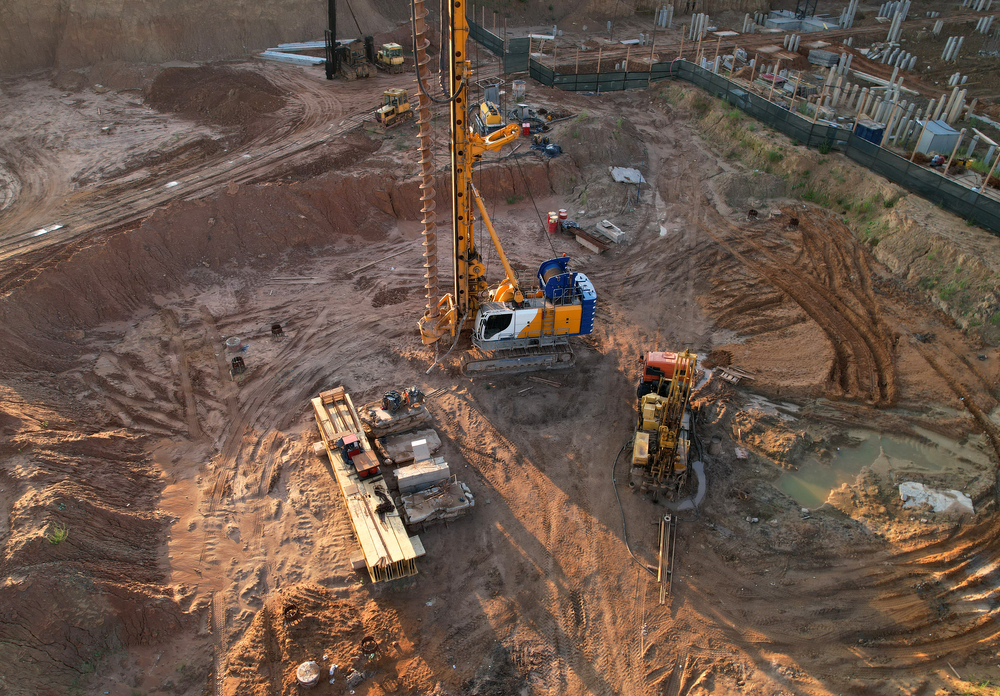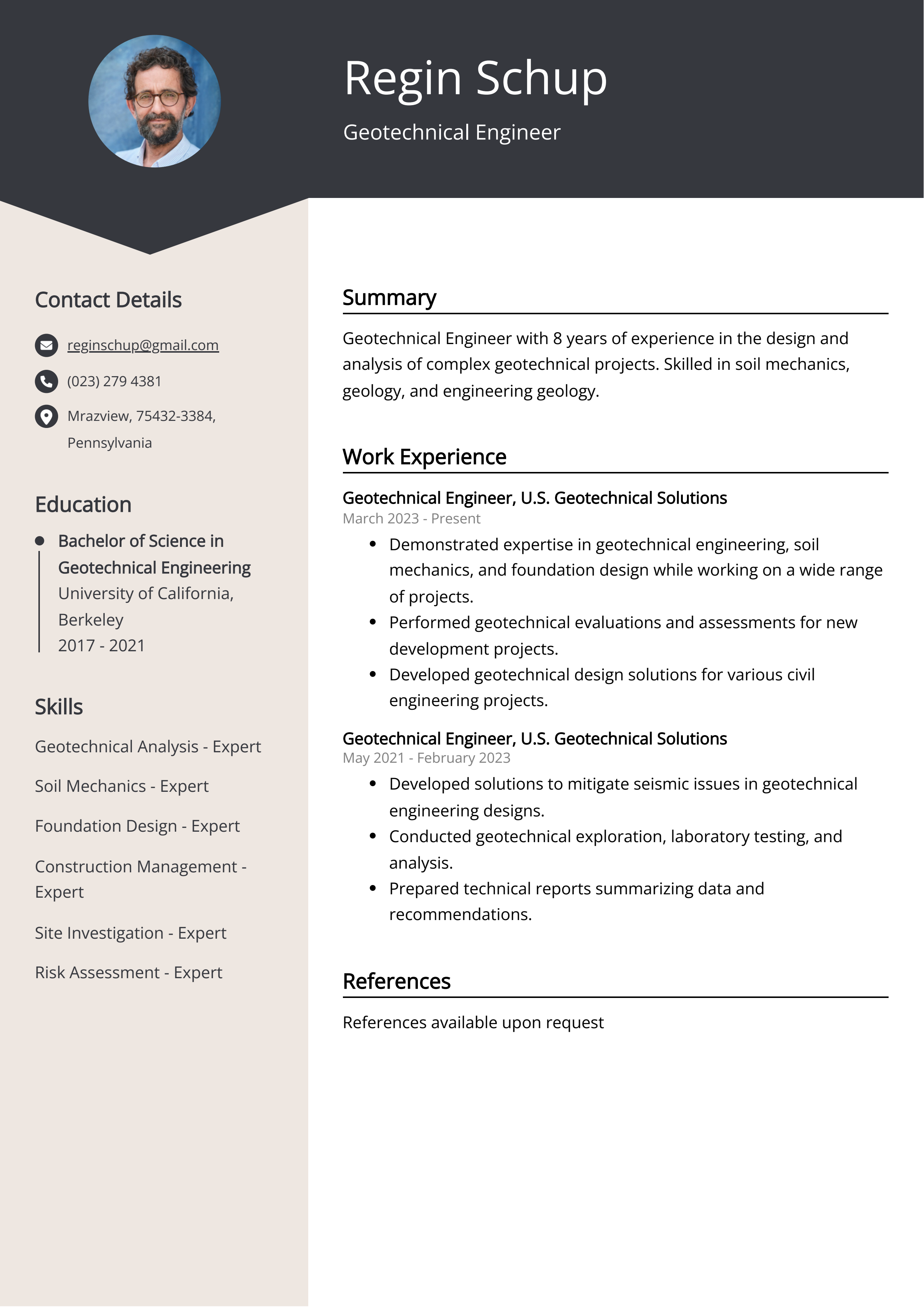Geotheta for Beginners
Geotheta for Beginners
Blog Article
The Facts About Geotheta Uncovered
Table of ContentsWhat Does Geotheta Do?The 2-Minute Rule for GeothetaThe Single Strategy To Use For GeothetaSome Known Factual Statements About Geotheta
They work together with civil designers, structural designers, architects, and other professionals to incorporate geotechnical considerations into the total task style and building process. This calls for reliable team effort, sychronisation, and communication to guarantee that the geotechnical facets straighten with the project purposes and fulfill regulatory requirements.Mining & Products Design: Principles of exploration, infiltration prices, and elements affecting the option of drilling technique. Blowing up techniques in surface area and underground operations. Mechanical and continual approaches to fragmentation, consisting of longwall shearing and fullface boring.
Modelling of fragment and bit size distributions; comminution as a transfer function. Comminution technology: crushing, grinding, size category. Integrated evaluation of fragmentation and comminution procedures. Offered by: Mining & Products Design.
Things about Geotheta
Bachelor's level programs in civil, geotechnical, geological, and ecological design generally last four years and include basic education and learning training courses in English, social science, and the liberal arts, along with programs in innovative mathematics, structural geology, and fluid mineralogy. (https://issuu.com/geotheta)
Geotechnical engineering includes the assessment of the soil and rock problems at a certain website, and their effects for the advancement of that website. As the majority of frameworks rely upon the ground for assistance, it is without shock that an in-depth understanding of the ground problems, and the suitability of structure systems, are crucial to the long-lasting stability and performance of the structure or framework.
Being experts in the examination of geological formations and ground behavior, geotechnical designers carry out clinical investigations and testing to recognize the effect these geological formations may have on the layout and building of building, civil and infrastructure tasks. This proficiency is important for the style and building and construction of buildings, roads, passages, dams, bridges, and water system and sewage systems.
The geotechnical team at Douglas Allies consistently seek advice from with engineers, design engineers, developers, and builders to make recommendations on design and development proposals to ensure that the developed frameworks are suitably made for the ground problems. For instance, the style of footing systems needs to consider the weight of the structure, the ability of the ground to sustain that weight along with activity resistances and reliable construction.
The Geotheta PDFs
This job is greatly simplified by the usage of our Douglas Map geospatial system which makes this details readily available in a very easy to utilize web browser interface. A geotechnical engineer will direct the exploration of boreholes and test pits to gather dirt and various other samples, and additionally examine surface area attributes and ground direct exposures to form a geotechnical design of the subsurface problems.
Depending on the project kind and ground problems encountered, research laboratory screening may to name a few things examine stamina, compressibility, reactivity and/or permeability of soil and rock samples. Hereafter information is accumulated and collated, the results are used for a geotechnical version of the site, which is usually presented as sections throughout the site.

A geotechnical examination by nature can only examine the ground conditions at the areas drilled or excavated. All-natural variants in soil and rock problems can happen throughout a site and in between examination areas. It is for that reason great method that the geotechnical designer be maintained throughout building and construction of the job to offer on-site confirmation that the ground problems experienced are consistent with the expectations and guidance supplied in the geotechnical investigation report.
The smart Trick of Geotheta That Nobody is Talking About
Geotechnical designers use their in-depth understanding of dirt and rock to analyze threat and solve problems on varied framework projectsGeotechnical design is a specialist branch of civil design which considers the behaviour of planet materials and the application of soil and rock technicians. Consulting Engineers. As a geotechnical designer, you will certainly analyze the physical, mechanical and chemical properties of dirt and rock in order to design foundations, keeping structures and earthworks
Geotechnical engineering is very closely connected to and overlaps with, both engineering geology and ground design - https://telegra.ph/Why-Geotheta-is-Your-Go-To-for-Geotechnical-Engineers-in-South-Africa-08-02. It's possible to be experts in geotechnics or benefit a geotechnical firm however be recognized as an engineering geologist or a ground engineer. As a geotechnical designer, you'll require to: develop and maintain relationships with customers and other professionals included in the website, throughout each projectmaintain security criteria on website be mindful of expense effects when you make recommendationsstudy geological maps and aerial photographs from a series of sources and from various time periodsexamine construction prepares to see just how practical they are based upon your understanding of the siteinvestigate threats or geological dangers for the sitesearch for environmentally delicate attributes, such as land fill start to create factual and interpretive ground modelsplan area investigationsdrill and evaluate examples of bedrock, dirt, groundwater and extra products oversee various other specialists on sitesolve technological concerns as they occur, such as unanticipated frameworks at drill sitesmonitor problems throughout and after construction to make sure structures are steady in the brief and lengthy termadding information accumulated on website to your first researchcreating geotechnical calculations, try this web-site drawings, and two or three-dimensional computer models interpreting the datamaking recommendations regarding the suggested usage of the site

Report this page